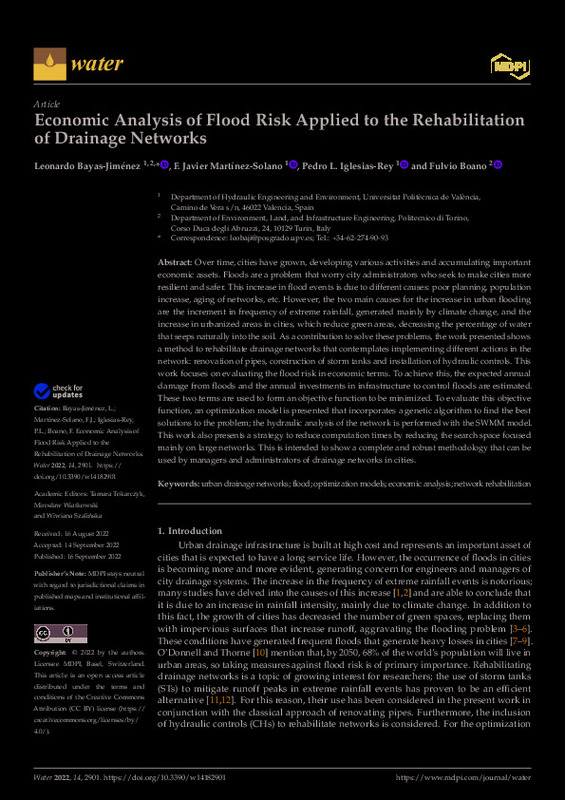JavaScript is disabled for your browser. Some features of this site may not work without it.
Buscar en RiuNet
Listar
Mi cuenta
Estadísticas
Ayuda RiuNet
Admin. UPV
Economic Analysis of Flood Risk Applied to the Rehabilitation of Drainage Networks
Mostrar el registro completo del ítem
Bayas-Jiménez, L.; Martínez-Solano, FJ.; Iglesias Rey, PL.; Boano, F. (2022). Economic Analysis of Flood Risk Applied to the Rehabilitation of Drainage Networks. Water. 14(18):1-20. https://doi.org/10.3390/w14182901
Por favor, use este identificador para citar o enlazar este ítem: http://hdl.handle.net/10251/193160
Ficheros en el ítem
Metadatos del ítem
| Título: | Economic Analysis of Flood Risk Applied to the Rehabilitation of Drainage Networks | |
| Autor: | Bayas-Jiménez, Leonardo Boano, Fulvio | |
| Entidad UPV: |
|
|
| Fecha difusión: |
|
|
| Resumen: |
[EN] Over time, cities have grown developing various activities, and accumulating important eco-nomic assets. Floods are a problem that worries city administrators who seek to make them more resilient and safer. This ...[+]
|
|
| Palabras clave: |
|
|
| Derechos de uso: | Reconocimiento (by) | |
| Fuente: |
|
|
| DOI: |
|
|
| Editorial: |
|
|
| Versión del editor: | https://doi.org/10.3390/w14182901 | |
| Agradecimientos: |
|
|
| Tipo: |
|









